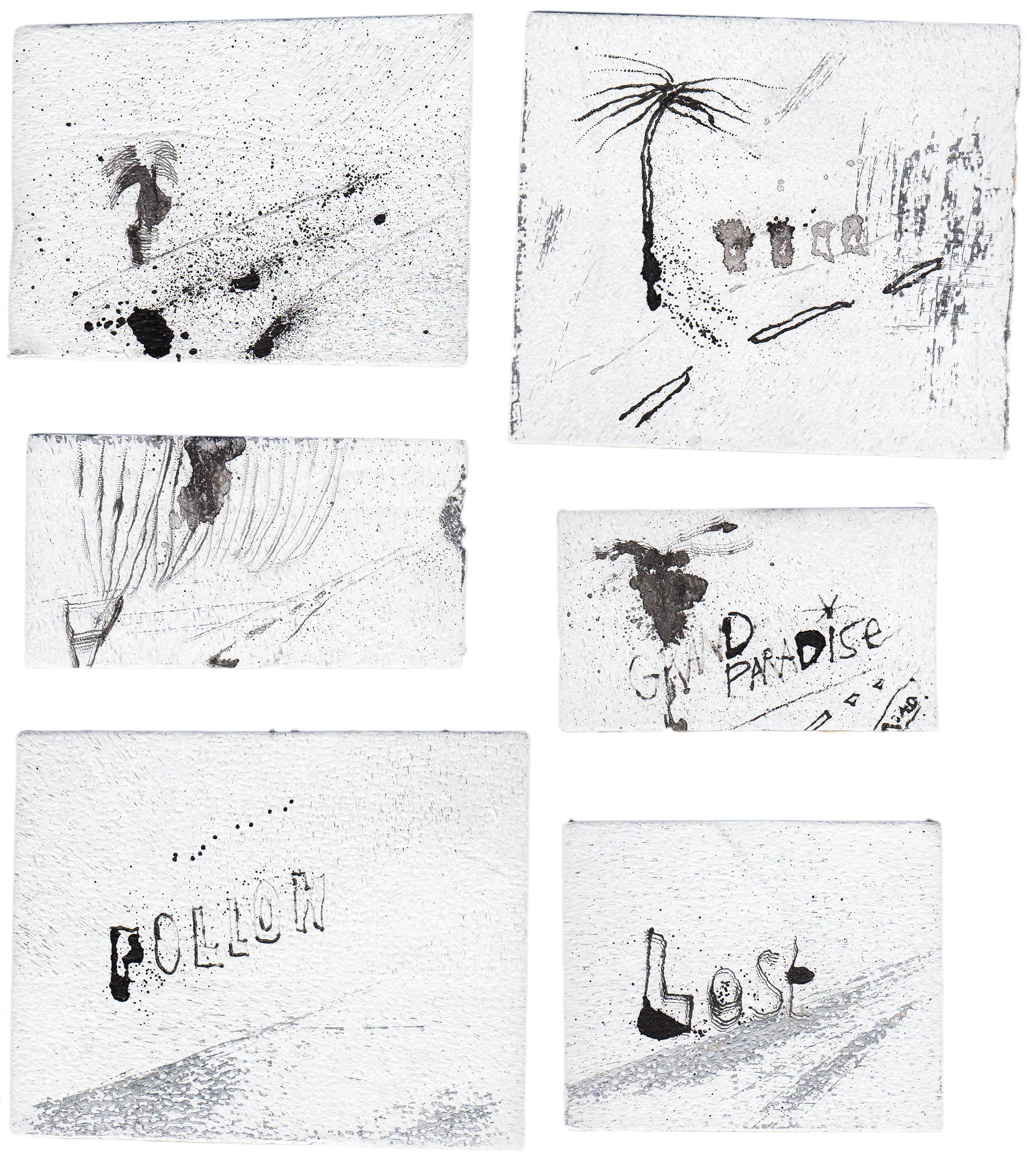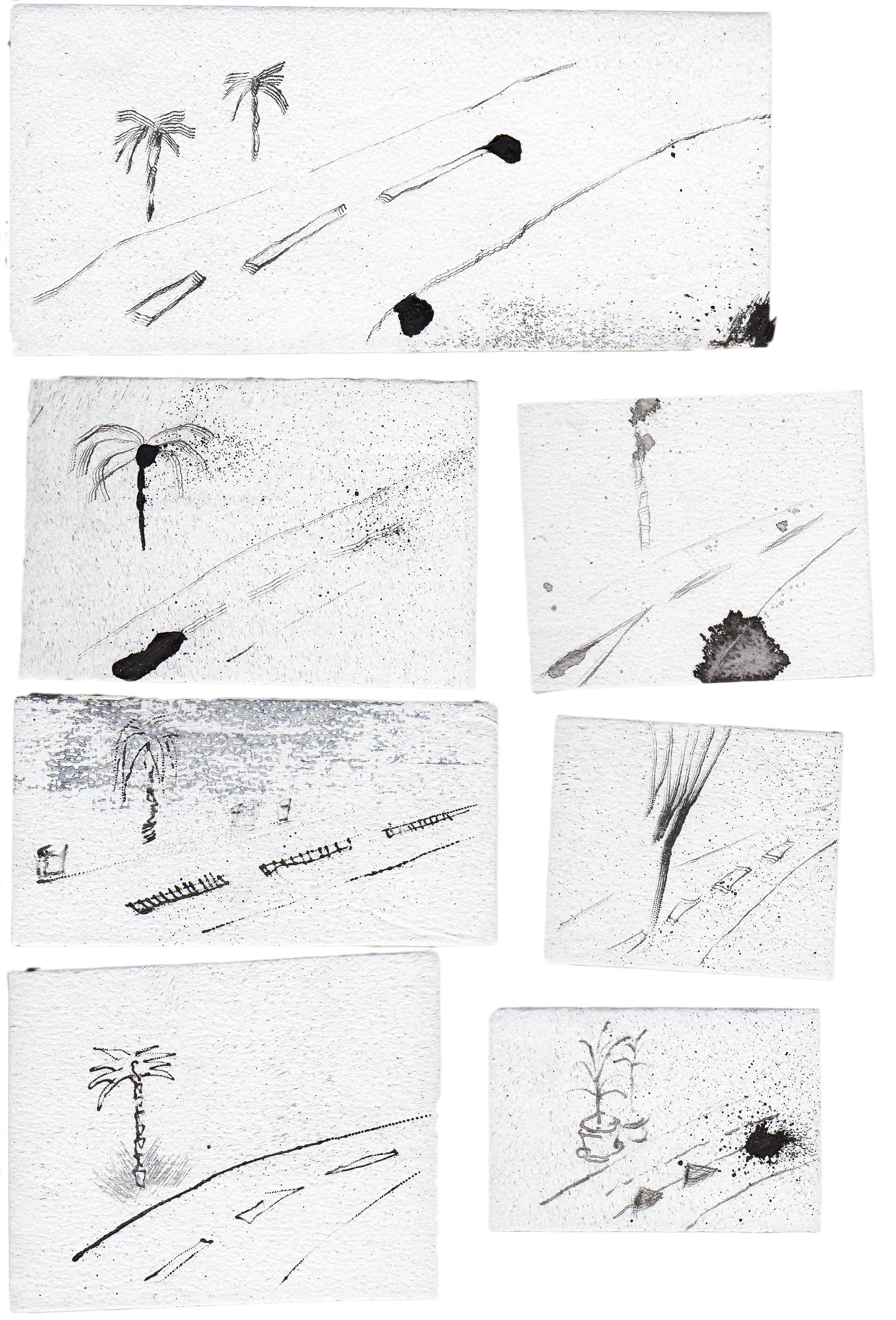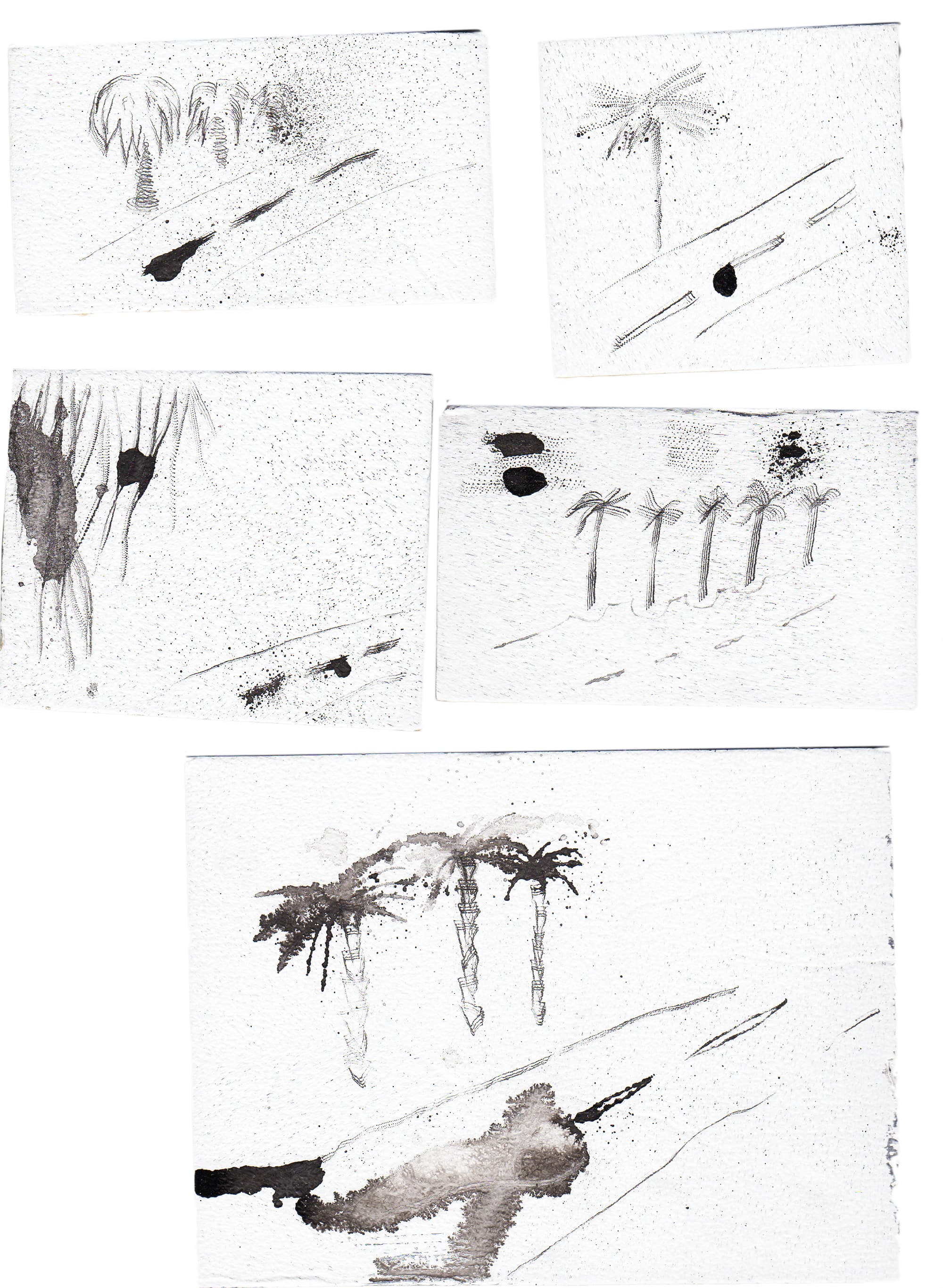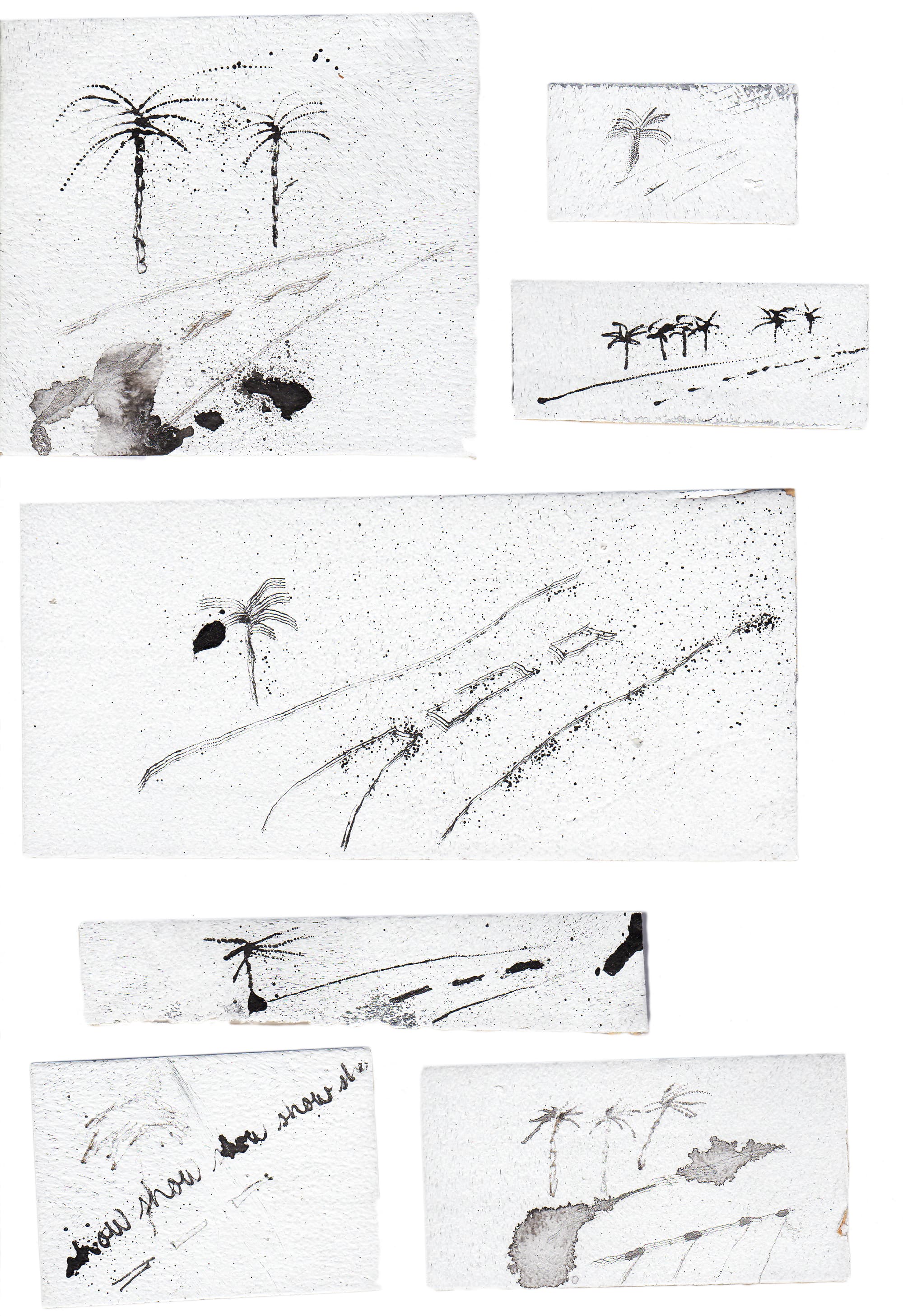






- 2020 »OHh PLEASE«
- Related Work Next Project
»T-drawings«
offene Serie (seit 2017)/open series (since 2017)
Tusche auf Climaflex® (alukaschiertes Polystyrol), Wandfarbe, Graukarton. Zeichnungen mit Tätowiermaschine und Tusche / Ink on Climaflex® (alu-laminated polystyrene), wall paint, gray cardboard. Drawings with tattoo machine and ink
(…) Eine zentrale Rolle in Franziska Nasts künstlerischen Auseinandersetzung spielen Transformationstechniken. Ausgehend von der üblichen Methode des Tätowiervorgangs auf dem menschlichen Körper, transformiert sie den Prozess: sticht und bezeichnet statt Haut andere Untergründe. So entstehen auch die filigranen Zeichnungen im Kleinformat, die sogenannten »T-drawings«. Zeichengrund der kleinen »T-drawings« ist Isolationsmaterial aus dem Baumarkt, das man üblicherweise hinter die Heizung klebt. Franziska Nast weißt die zunächst silberfarbenen Zuschnitte aus »Climaflex®« (alukaschiertes Polystyrol) mit Wandfarbe und fixiert sie auf Graukarton. Die Materialität dieser Verbindung ist hautartig, weich, die Tinte verläuft aber nicht. Die Zeichnungen entstehen mittels Tätowiermaschine und -nadeln in unterschiedlichen Größen. / (...) Transformation techniques play a central role in Franziska Nast's artistic exploration. Starting from the usual method of tattooing on the human body, she transforms the process: stitches and marks other surfaces instead of skin. This is also how the filigree drawings in small format, the so-called "T-drawings", are created. The drawing ground of the small "T-drawings" is isolation material from the hardware store, which one usually sticks behind the heater. Franziska Nast whitewashes the initially silver-colored blanks of "Climaflex®" (aluminum-laminated polystyrene) with wall paint and fixes them to gray cardboard. The materiality of this compound is skin-like, soft, but the ink does not run. The drawings are created using tattoo machine and needles of different sizes.